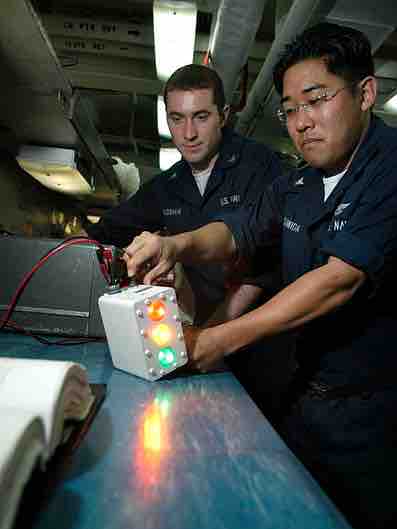Quality Standards
The International Organization for Standardization (ISO) created the Quality Management System (QMS) standards in 1987. They were the ISO 9000:1987 series of standards, comprising ISO 9001:1987, ISO 9002:1987, and ISO 9003:1987; which were applicable in different types of industries, based on the type of activity or process (designing, production, or service delivery).
The standards are reviewed every few years by the ISO. The version in 1994 was called the ISO 9000:1994 series; consisting of the ISO 9001:1994, 9002:1994 and 9003:1994 versions.
A major revision occurred in 2008, and the series was called ISO 9000:2000 series. The ISO 9002 and 9003 standards were integrated into one single certifiable standard: ISO 9001:2008. After December 2003, organizations holding ISO 9002 or 9003 standards had to complete a transition to the new standard.
The ISO 9004:2009 document gives guidelines for performance improvement over and above the basic standard (ISO 9001:2000). This standard provides a measurement framework for improved quality management, similar to and based upon the measurement framework for process assessment.
The Quality Management System standards created by ISO are meant to certify the processes and the system of an organization, not the product or service itself. ISO 9000 standards do not certify the quality of the product or service.
In 2005 the International Organization for Standardization released a standard, ISO 22000, meant for the food industry. This standard covers the values and principles of ISO 9000 and the HACCP standards. It gives one single integrated standard for the food industry and is expected to become more popular in the coming years in the industry.
ISO has also released standards for other industries. For example, Technical Standard TS 16949 defines requirements in addition to those in ISO 9001:2008 specifically for the automotive industry.
ISO has a number of standards that support quality management. One group describes processes (including ISO/IEC 12207 & ISO/IEC 15288), and another describes process assessment and improvement (ISO 15504).
Quality Audits
A quality audit is the process of systematic examination of a quality system carried out by an internal or external quality auditor or audit team. It is an important part of organization's quality management system and is a key element in the ISO quality system standard, ISO 9001.
Quality audits are typically performed at predefined time intervals and ensure that the institution has clearly defined internal system monitoring procedures linked to effective action. This can help determine if the organization complies with the defined quality system processes and can involve procedural or results-based assessment criteria.

Quality Check
Quality assurance inspectors regularly perform audits.
With the upgrade of the ISO 9000 series of standards from the 1994 to 2008 series, the focus of the audits has shifted from purely procedural adherence towards measurement of the actual effectiveness of the Quality Management System (QMS) and the results that have been achieved through the implementation of a QMS.
Audits are an essential management tool to be used for verifying objective evidence of processes, to assess how successfully processes have been implemented, for judging the effectiveness of achieving any defined target levels, to provide evidence concerning reduction and elimination of problem areas.
For the benefit of the organisation, quality auditing should not only report non-conformance and corrective actions, but also highlight areas of good practice. In this way, other departments may share information and amend their working practices, which contributes to continual improvement.
Quality audits can be an integral part of compliance or regulatory requirements. One example is the US Food and Drug Administration, which requires quality auditing to be performed as part of its Quality System Regulation (QSR) for medical devices (Title 21 of the US Code of Federal Regulations part 820).
Several countries have adopted quality audits in their higher education system (including New Zealand, Australia, Sweden, Finland, Norway, and the USA). Initiated in the UK, the process is focused primarily on procedural issues rather than on the results or the efficiency of a quality system implementation.
Audits can also be used for safety purposes. Evans and Parker (2008) describe auditing as one of the most powerful safety monitoring techniques and "an effective way to avoid complacency and highlight slowly deteriorating conditions," especially when the auditing focuses not just on compliance but effectiveness.
The processes and tasks that a quality audit involves can be managed using a wide variety of software and self-assessment tools. Some of these relate specifically to quality in terms of fitness for purpose and conformance to standards, while others relate to quality costs or (more accurately) to the cost of poor quality. In analyzing quality costs, a cost of quality audit can be applied across any organization rather than just to conventional production or assembly processes.